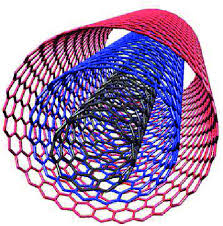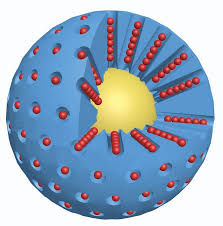Molecular PL Photoluminescence Spectroscopy in Nanotubes (CNTs and CNTs)
Researcher and author: Dr. Afshin Rashid
Note: In photoluminescence spectroscopy in nanotubes (CNTs and CNTs) external factors affecting the fluorescence intensity are growth defects, length of nanotubes, molecules present in the environment, physical or chemical degradation, and chemical functionalization. The interaction between the guest molecules in covalent and non-covalent ways with the host nanotubes can lead to intensification or deactivation of PL intensities.
PL spectroscopy provides good information about CNT semiconductor nanotubes and CNTs in the sample . This can be used to arrange the sample according to the structure or to measure the selective production of a species from the resulting sample in a rapid manner. Of course, there are many external factors that reduce the accuracy of the data obtained, and further calculations and accurate calibration will increase the accuracy of the work.
CNT and CNTS electrical conductivity measurements
Metal and semiconductor SWCNTs have different electrical properties that are reflected in their conductivity measurements . In theory, metal nanotubes can pass an electrical current density of 4 109 109 which is 1000 times more Acm-2 than metals such as copper, whereas metal unlike semiconductor SWCNTs have DOS electrons at the surface and surface. Fermi is the chemical potential of electrons. At zero, this surface contains electrons, but in the semiconductor the electrons fall into the energy gap, where there are no permissible energy levels. Therefore, electrons exist to stabilize the transport complex formed by increasing the reactivity to the surface of the nanotube.
Metal swcnts are better able to stabilize the transducer and because of this the reaction speed is increased. Selective removal of semiconductor SWCNTs is related to the doping of the cavity with hydrogen peroxide. If the surfactant is used, the hydrogen peroxide breakdown reaction is enhanced by diameter because the SWCNTs in which the surfactant is inserted react more strongly than the others. The oxidation of nanotubes with air can be compared with the oxidation of nanotubes with hydrogen peroxide . Under air oxidation conditions , SWCNTs react with a higher chiral angle and a lower diameter faster. Therefore SWCNTs with low chiral angle and diameter can be used Separated many by burning in the air with the help of light .
Similarly solution solubilization indicates that the reaction rate is diameter dependent because the reaction is pyramidal or nonlinear on the orbital π, which is a diameter dependent process. While exposed to light in the air, metal SWCNTs in the thin layer of carbon nanotubes can be selectively degraded in the presence of a semiconductor type. Nitronium ions have been reported to selectively attack low-diameter metal SWCNTs and convert them to amorphous carbon . Double sulfonic acid mixtures are also used to dissolve SWCNTs by direct protonation. From there, the protonated to geometry chain is sensitive, this technique permits the selectivity based on the diameter.
Conclusion :
Reaction with hydrogen gas and fluorine, by introducing SP3, converts the electrical structure of metallic nanotube hybridization into a semiconductor. These reactions sometimes damage the walls of the nanotubes, resulting in the formation of amorphous carbon or graphite layer structures . The hydrogenation of single-walled nanotubes enhances the semiconductor nature of SWCNTs at normal temperatures . High plasma or high temperature reaction etching into the wall of metal nanotubes .
Author: Afshin Rashid
Nano-Microelectronics at Islamic Azad University, Science and Research Branch, Tehran





